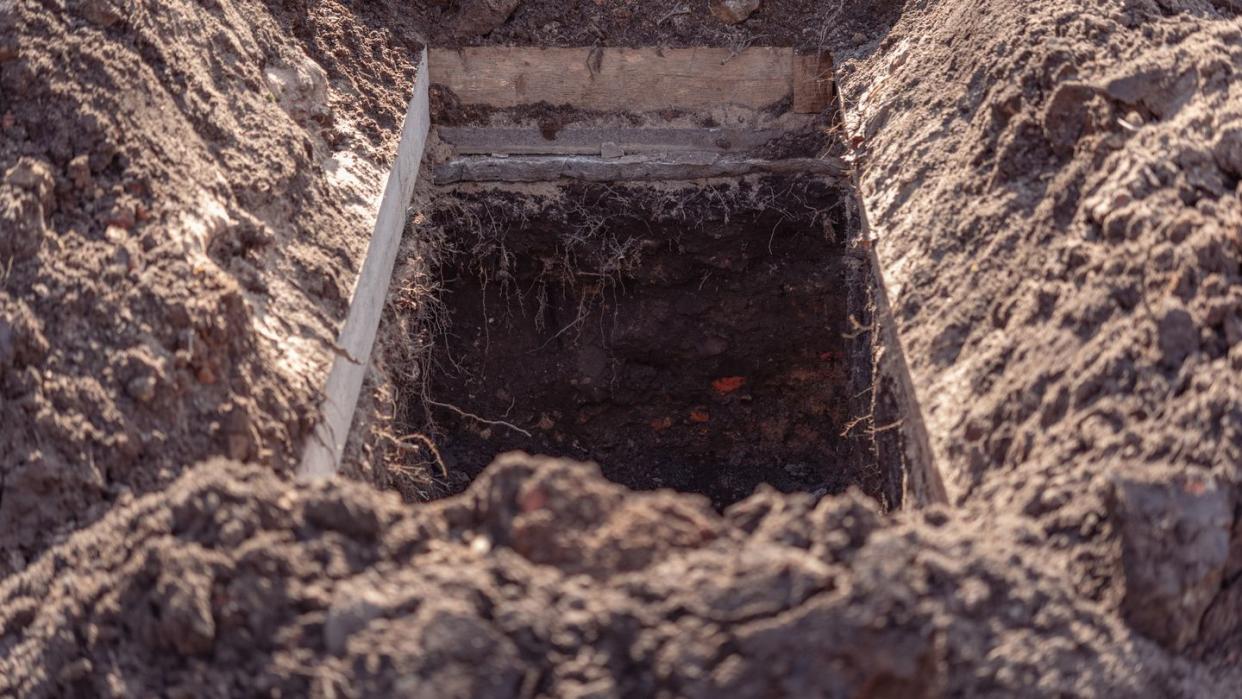Archaeologists Found 28 Horse Skeletons in Grave Pits—and They Suggest Something Wicked

The discovery of 28 horse skeletons comes with an odd, formulaic arrangement in France.
Experts believe the horses were either killed in war or sacrificed in some sort of ritualistic proceeding.
The first 10 horses excavated were all buried in the same exact orientation.
The initial intrigue of discovering a mix of buildings, pits, ditches, and a path from around the 6th century in France quickly took second fiddle to the discovery of nine pits containing oddly arranged horse remains dated from 100 B.C. to 100 A.D.
The first pit excavated revealed 10 full horses, each lying on its right side with the heads directed to the south. The horses were “carefully placed in the pit and organized in two rows and on two levels,” according to a translated statement from the French National Institute for Preventive Archaeological Research (INRAP). All the conditions show these small horses, characteristic of Gallic livestock, were buried simultaneously and soon after their death. Adding to the questions of just what this discovery represented is that each horse was a male over 4 years old.
Experts have narrowed down the reasons for this setup down to a post-war burial or some sort of ritual.
“The hypothesis of animals sacrificed as part of a complex ritual, of which we only have a few fragments, much also be considered,” the statement says. “The number of horses sacrificed constitutes a massive drain on the heart of a herd. This heavy investment then testifies to the importance of the sacrifice.”
In all, the nine graves on the 3.2-acre site show the skeletons of 28 horses, all buried roughly 2,000 years ago. Located in Villedieu-sur-Indre in central France, that first pit offered up the highest number of skeletal remains. The second grave uncovered just two horses.
Being that the graves contain only adult males, the archaeologists don’t believe any sort of sickness or epidemic struck the horses. Along with the theory of a ritual sacrifice, though, the experts believe another viable scenario is that the horses all died in battle.
While the ritual sacrifice might present the most unique theory, Gallic Wars involving Julius Caesar occurred around the same time and in the same region. In fact, the statement reports a fortified Celtic settlement lies just a few hundred yards from the burial site.
The INRAP statement notes that this isn’t the first time a grave of horses has been found in similar state. Two previous finds from decades ago are tied to around the same timeframe, are near a fortified settlement, and contain only adult male horses. In one of those finds, though, riders were buried with the horses.
“The geographical location of Gergovie, the mass presence of adult male horses dating from the end of the Gallic independence, make the link between the burial of these horses and the battles of the Gallic War attractive,” the statement reads.
Archeologists also discovered Roman sling bullets, which could offer proof of a historical confrontation.
“The discoveries of Villedieu-sur-Indre today,” the statement reads, “complements those made two decades ago in Auvergne and lead us to reconsider the religious or funerary practices of the end of the Iron Age and the beginning of the Roman period.”
You Might Also Like


